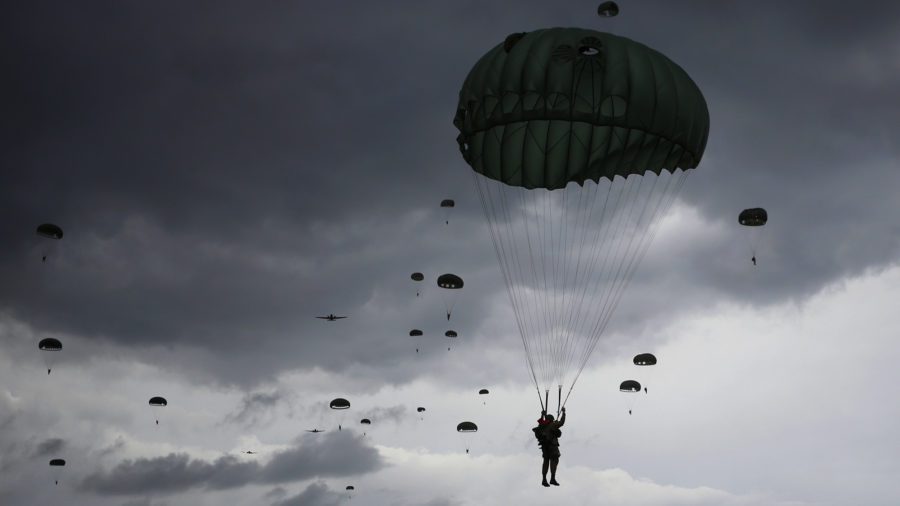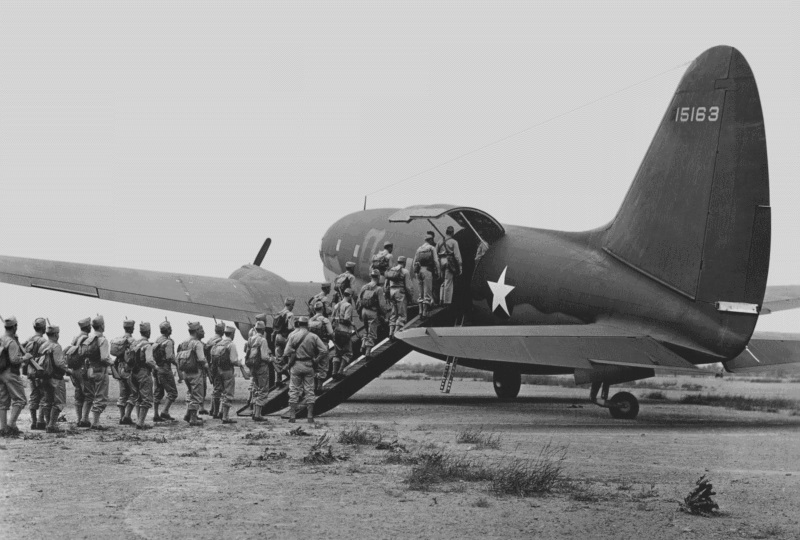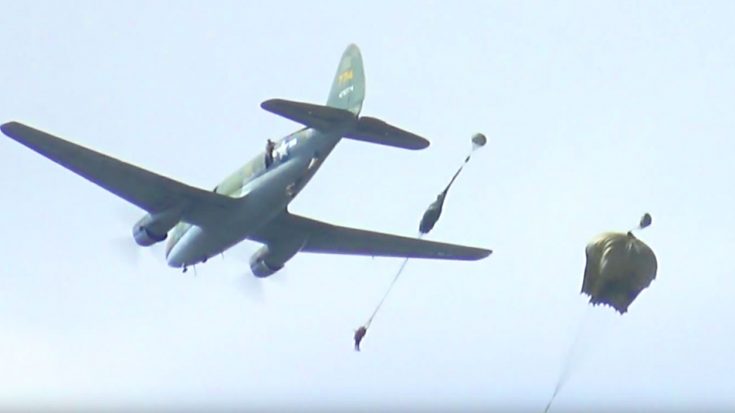
First use of T5 camo parachute instead of the bright white T4 parachute used earlier in the war. Second adding the back up chute as a usable chute.

The final large production-run C-46D arrived in 1944–45 and featured single doors to facilitate paratroop drops. Production totaled 1,430 aircraft.[14] Although a one-off XC-46B experimented with a stepped windscreen and more powerful engines, a small run of 17 C-46E s had many of the same features as the XC-46B, along with three-bladed Hamilton-Standard propellers replacing the standard Curtiss-Electric four-bladed units.
A last contract for 234 C-46F s reverted to the earlier cockpit shape but introduced square wing tips. A sole C-46G had the stepped windscreen and square wing tips but the end of the war resulted in the cancellation of any additional orders for the type.[12]
Armed with the ‘Tanker’ Garand and jumping from the faster C-46 Commando (300 vs 225). able to steer to their landing site rather then a preplanned on but dropping from 6 to four soldiers.

maybe even allow them to drop into the gray zone like g-units. Just an idea for a unique unit or sub class that could be added. Market garden gave me the idea after sympathizing not with duckS but clay pigeons. 

Shown above is a T26 prototype rifle manufactured in Springfield Armory’s Model Shop in early 1945 above an M1 rifle modified under the auspices of the Pacific Warfare Board in the Philippines during late 1944 and sent to the Ordnance Department for evaluation and testing. Note the near-pristine condition of the former compared to the well-used condition of the latter.
